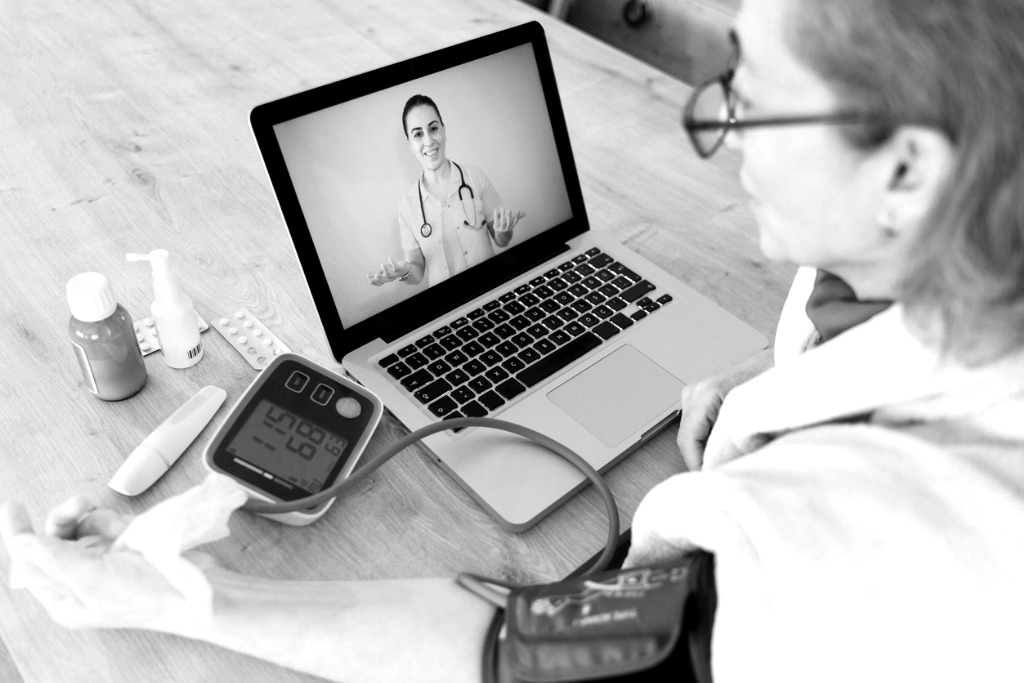The future of the patient experience is remote patient care
May 18, 2022 Six ConsultingHealthcare shifting to greater virtualization brings with it a host of benefits for providers and the patient experience. Remote patient monitoring leads the way to offering better outcomes and expanded care access.

What do Chile, the Czech Republic, and the potential of virtualized healthcare have in common? $250 billion.
In Chile's and the Czech Republic's case, it's the approximate GDP of the country - $252 billion in Chile's case, $243 in the Czech Republic's. For virtualized healthcare? It's the amount that McKinsey & Company estimates could be shifted to "virtual or virtually enabled care," given sustained usage and interest by providers and patients. While it's not a given, the indicators support that shift.
The good news is that the move to virtualized healthcare, with the assistance of remote devices, comes with a host of benefits for both providers and patients. The better news is that healthcare providers of all sizes can begin leveraging remote care devices to improve the patient experience almost immediately.
How? By combining the data from these devices with alerts, patient dashboards, and enhanced communication, providers can improve patient outcomes, overcome industry challenges, and increase efficiency to support growth, profitability, and better patient outcomes.
What is Remote Patient Care?
For many of us, telehealth was a foreign concept before the pandemic. Although it was catching some attention, COVID-19 helped to legitimize telehealth. Medicare coverage of telehealthcare saw a 63-fold increase in utilization as a result.
So, it's easy to think of "telehealth" when someone mentions "remote patient care" or "remote patient monitoring." They are related in theory and different in practice. Telehealth can include a range of communication methods that would allow patients and care providers to interact, including telephones, email, and, according to a Medicaid definition, even fax machines.
In point of fact, remote patient monitoring (RPM) falls under the definition of telehealth. However, RPM generally refers to monitoring devices in a patient's home or as part of their day-to-day lives that allow information to be collected and shared with a provider. This differs even from patient monitoring to a degree, as patient monitoring refers to monitoring devices within a healthcare facility.
Examples of RPM include:
Blood pressure cuffs
Activity and sleep trackers
Glucose monitoring
Thermometers
Scales
Respiratory monitoring
The Benefits of Remote Patient Monitoring and Care
Saying that healthcare data collected throughout a patient's day-to-day activities is helpful is like saying that $250 billion in healthcare dollars is a lot of money - it's a significant understatement.
With RPM, care providers have a window into a patient's vital statistics and activities not only when they are in the office, hospital, or other care facilities but all of the time. The benefits are extensive and meaningful for both patients and providers.
Patients who share information with their providers through RPM devices experience greater ownership over their health and wellbeing, better and proactive diagnosis and treatment, and more options for access to providers and care,
Better access is significant. With RPM, providers can monitor and treat patients who may have been challenged with getting to regular appointments for both acute and chronic conditions. This includes the elderly, the disabled, and rural patients.
The result benefits both patient and provider - better patient outcomes. RPM reduces hospitalizations and readmissions and minimizes the length of stay in a facility. Providers can monitor diagnostic information as well as increase compliance rates. Plus, the overall patient experience is improved. With remote monitoring, practices can manage with a smaller staff while reducing patient wait times.
How to Utilize Remote Patient Monitoring in Your Practice
The thought of remote patient care may be overwhelming for small to medium-sized providers and facilities, but it doesn't need to be. The ability to collect information from RPMs and utilize that information to improve outcomes and the patient experience is more accessible than you might think.
For example, Salesforce's HealthCloud now offers cloud-based remote monitoring features and the other advantages of their interconnected healthcare platform. HealthCloud has already established itself as a patient relationship management tool, supporting everything from marketing messaging to personalized patient plans.
With the new RPM tools, providers can gather data from connected devices and view that data within a single patient dashboard. Seeing both office and remote patient information in a single windowpane allows care teams to note changes and trends in a patient's condition.
Doctors and other providers can use this information to proactively assist a patient in altering a care plan or use it to promote compliance with an existing plan. For instance, RPM data could indicate that a patient is falling short on their medication regimen - this could trigger an alert to the provider and even a message to the patient to remind them of their care plan and provide further explanation.
Conclusion
Telehealth, remote patient care, and monitoring aren't just a convenience that simplified care during the pandemic. Instead, these technologies provide a continuum of care and improved outcome opportunities that were previously unavailable. The patient experience, including streamlined access to providers and greater access to proactive care, is just the start of the list of benefits that RPM brings to the table.
Salesforce's HealthCloud provides many features and capabilities to providers of every size that might otherwise be only available to large hospitals and care networks. Six Consulting's deep experience in healthcare lets us set up the strategy, planning, and implementation of HealthCloud in a way that will catapult your practice forward. Contact us today to learn more about how our consultants and Salesforce can help you help more patients.
saw a 63-fold increase in utilization during COVID-19 times.
now offers cloud-based remote monitoring features and provides advantages of their interconnected healthcare platform
Ask us anything. From basic questions to complex queries.
We’re ready to talk to you : 470-395-0200
or drop us line at
hello@sixconsultingcorp.com


